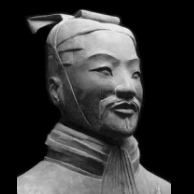Classification Of Thai Classifiers
-
Recently Browsing 0 members
- No registered users viewing this page.
-
Topics
-
-
Popular Contributors
-
-
Latest posts...
-
1
THAILAND LIVE Thailand Live Sunday 3 August 2025
Army Ordered to Shoot Down Unauthorised Drones Pictures courtesy of Amarin. The Royal Thai Army has been authorised to shoot down unidentified and unauthorised drones immediately, as part of escalated national defence measures following increased surveillance activity near sensitive military sites. Full story:https://aseannow.com/topic/1368570-army-ordered-to-shoot-down-unauthorised-drones/ -
109
Secret Epstein docs coming soon
https://bsky.app/profile/atrupar.com/post/3lveydaaswo2x https://bsky.app/profile/thetnholler.bsky.social/post/3lvezckfvd22r -
5
EU EU civil war erupts as Italy's Giorgia Meloni explodes!
Just ignore the courts. What's the problem?- 1
-

-
1
THAILAND LIVE Thailand Live Sunday 3 August 2025
Gripen Fighter Jet Deal Still Alive, Says Thai Air Force File photo courtesy of MGR online The Thai Air Force has firmly refuted allegations that Sweden has halted the sale of Saab JAS 39 Gripen jets. This follows reports claiming the suspension was linked to their usage against Cambodian forces at the border. Full story: https://aseannow.com/topic/1368523-gripen-fighter-jet-deal-still-alive-says-thai-air-force/ -
4
Congratulations fellow humans. The storm is finally upon us...
All going according to plan. -
5
EU EU civil war erupts as Italy's Giorgia Meloni explodes!
Despite the ruling, Italy’s deportations to Albania will continue — for now. Authorities have since redefined the role of the Albanian centres to include migrants whose asylum claims have already been rejected. The court decision is seen as a win for Italian judges but has limited short-term impact on government policy. Meanwhile, EU asylum law is evolving. A regulation set to take effect in June 2026 or sooner will allow governments to declare countries “safe” with certain exceptions — aligning more closely with Italy’s approach. The European Commission has also proposed its own non-binding list of safe countries, including Egypt and Bangladesh. https://www.euronews.com/my-europe/2025/08/01/eu-court-rebukes-italy-over-migrant-transfers-to-albania
-
-
Popular in The Pub







.thumb.jpeg.42eea318e3350459f0aaaa5460326bca.jpeg)


Recommended Posts
Create an account or sign in to comment
You need to be a member in order to leave a comment
Create an account
Sign up for a new account in our community. It's easy!
Register a new accountSign in
Already have an account? Sign in here.
Sign In Now